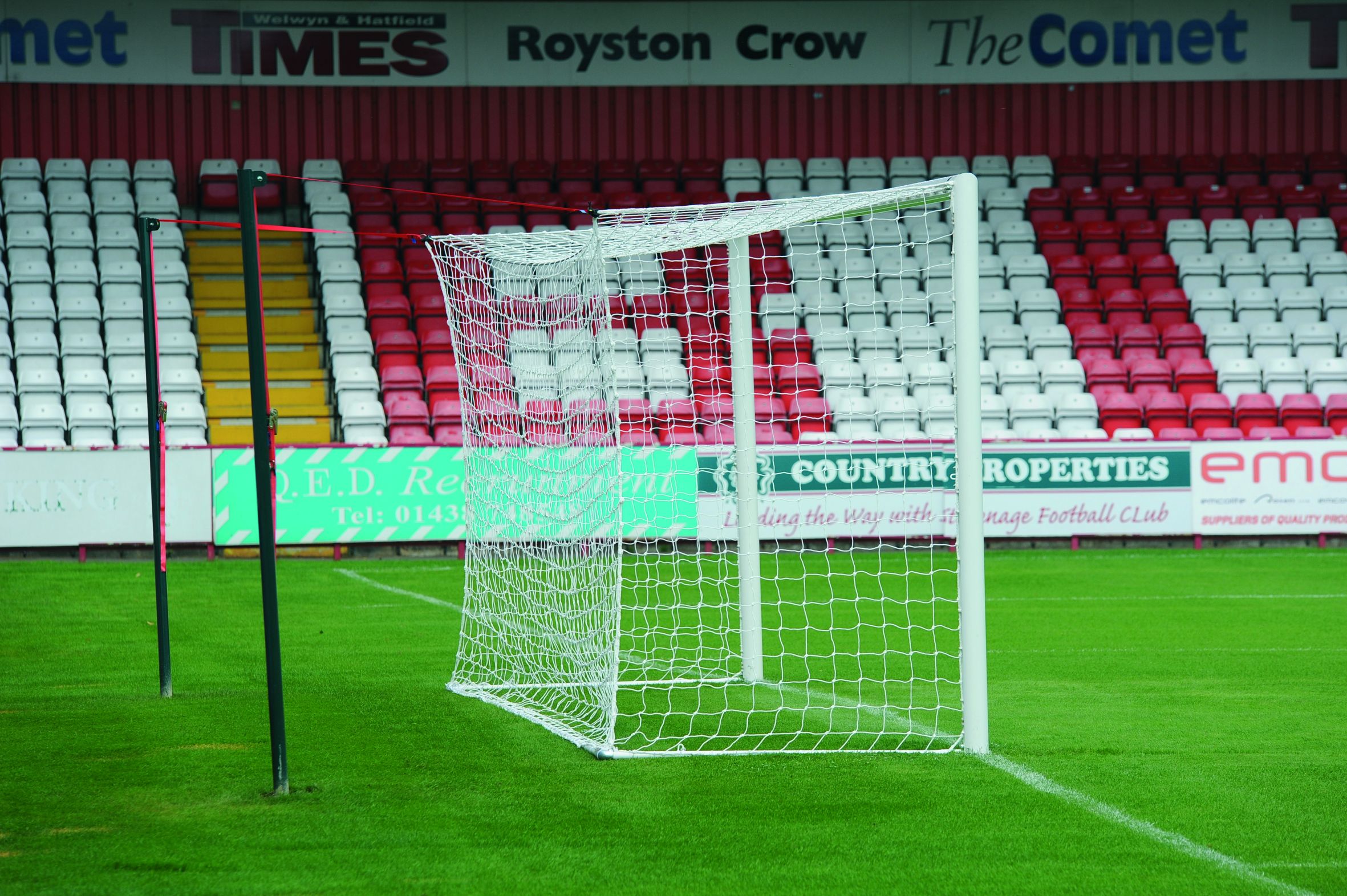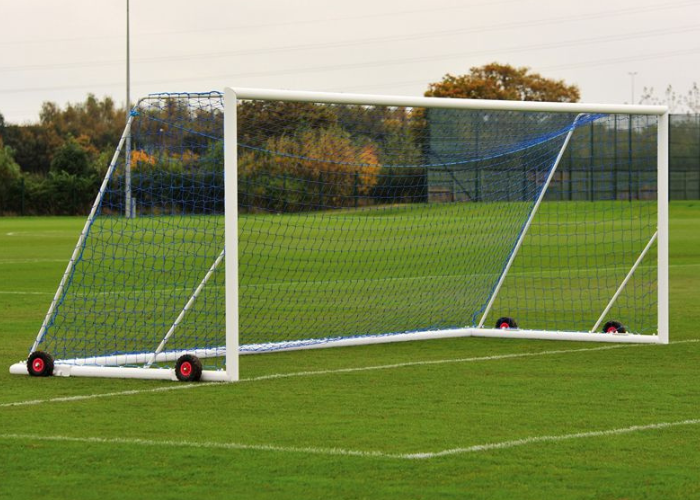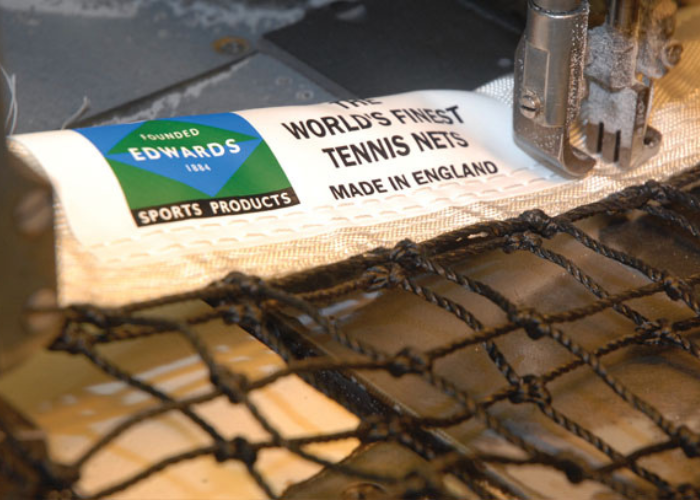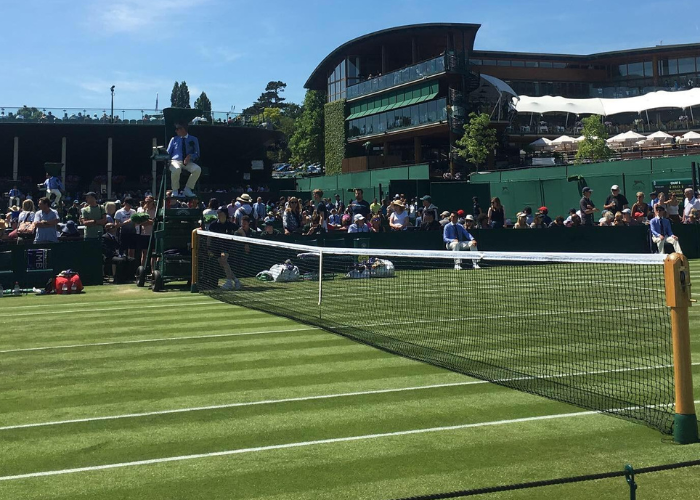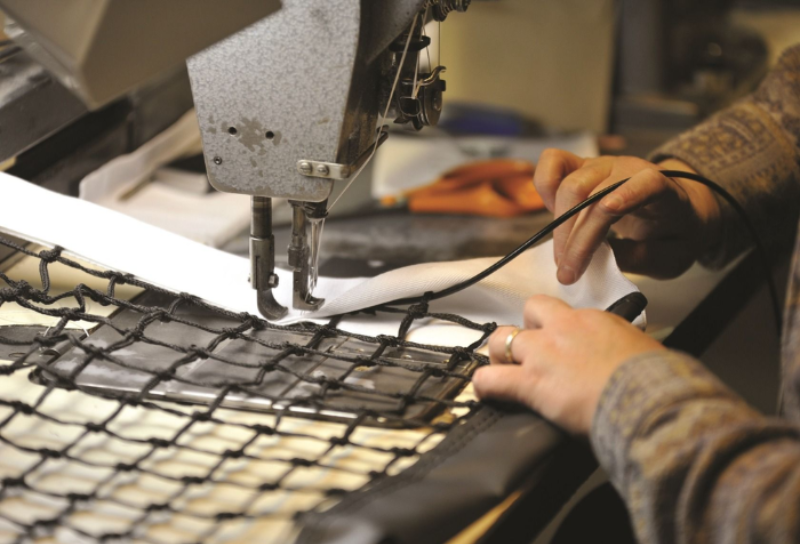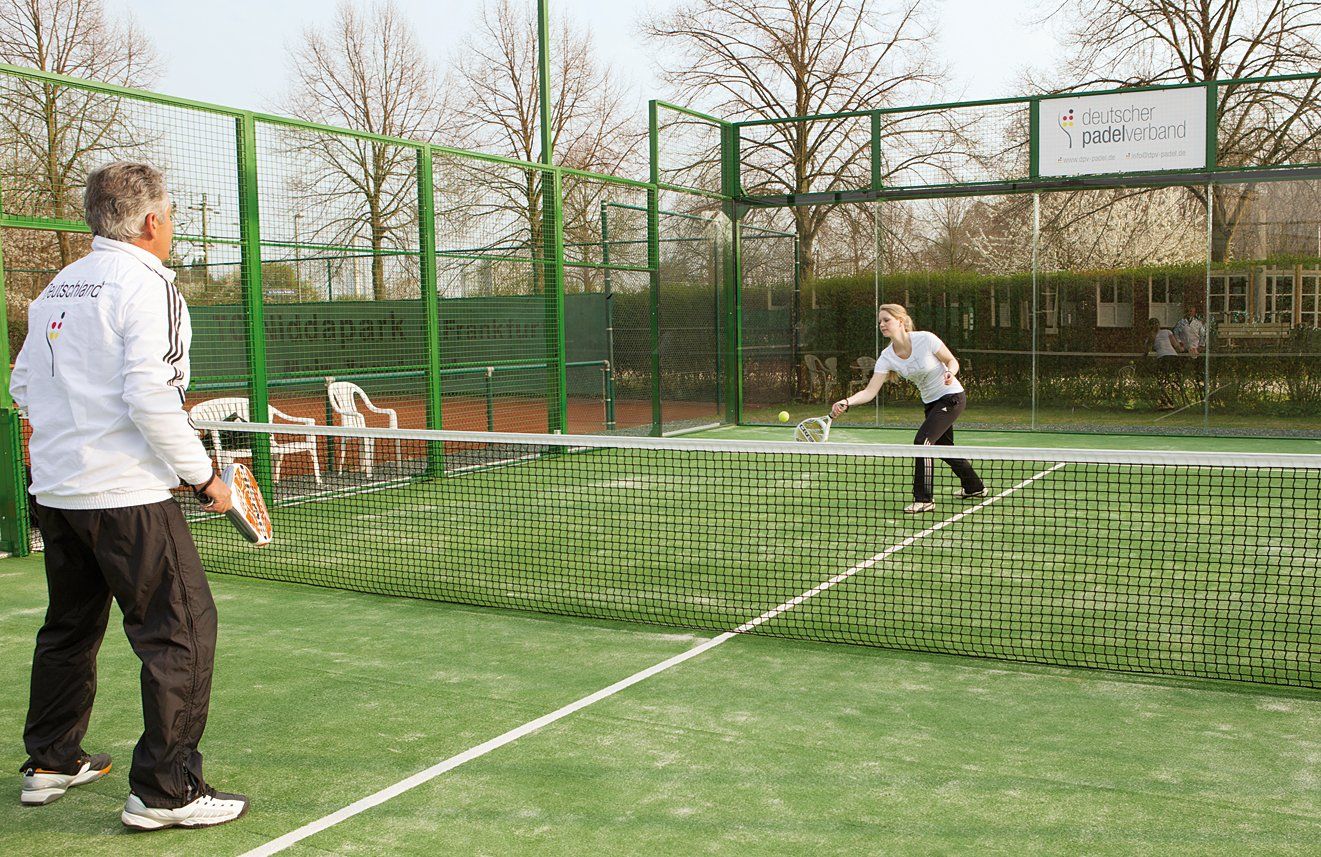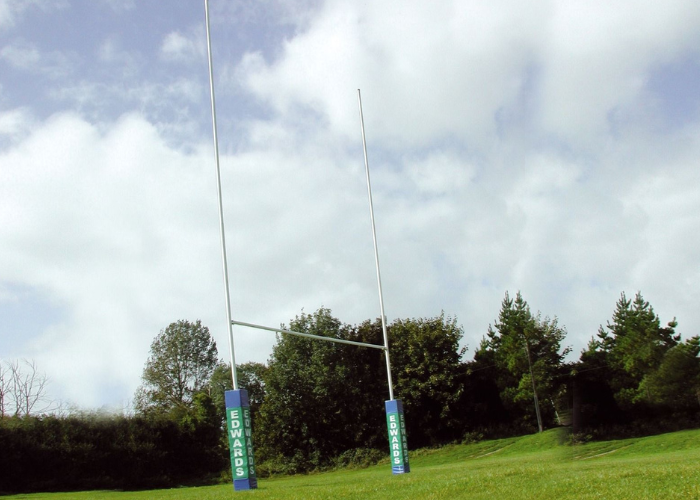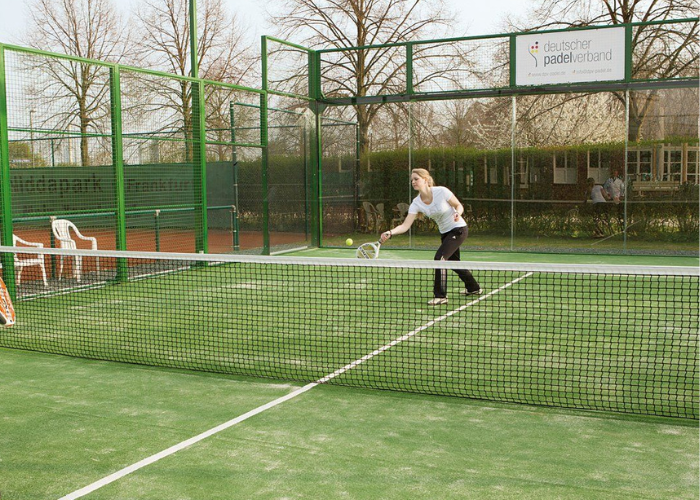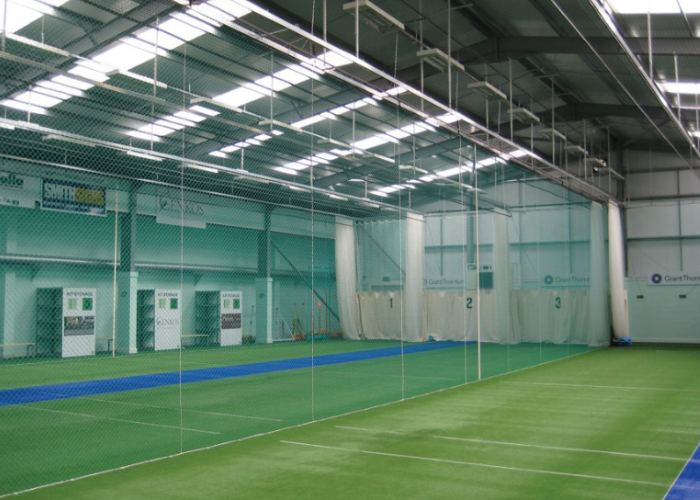We use cookies to make your experience better. To comply with the new e-Privacy directive, we need to ask for your consent to set the cookies. Learn more.
Pickleball Rules: How to Play for Beginners
- Admin
- Blog Posts
- 23 Apr 2024
-
123views
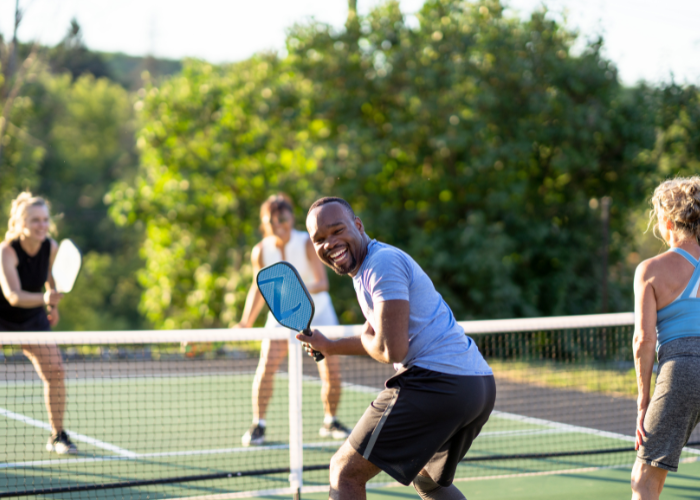
Discover the rules of pickleball with Edwards Sports' beginner's guide. Learn how to play, the different areas of the court, and how the scoring system works.
Cluing yourself up on the pickleball rules before you get stuck in to your first game is a wise move. To help you out, we’ve broken down everything you need to know into one easy guide!
Pickleball is a sport that combines elements of tennis, badminton, and table tennis, and it has greatly surged in popularity among people of all ages and skill levels.
This engaging game, playable indoors or outdoors on a badminton-size court, appeals due to its simplicity and the minimal equipment required. If you're new to pickleball or looking to clarify the rules, you've come to the right place.
Our guide covers the essential rules and tips to get you started, ensuring you enjoy this fast-growing sport with confidence.
The Basic Pickleball Rules
Pickleball can be played with two or four players, making it versatile for singles or doubles play. Doubles matches are more common in pickleball, and these games will be referenced in this blog.
The court is a rectangle that measures 20 feet in width and 44 feet in length for both singles and doubles matches. Its dimensions promote fast-paced, strategic gameplay that is accessible and enjoyable for players of all skill levels.
|
Here’s a quick overview of pickleball rules for beginners:
|
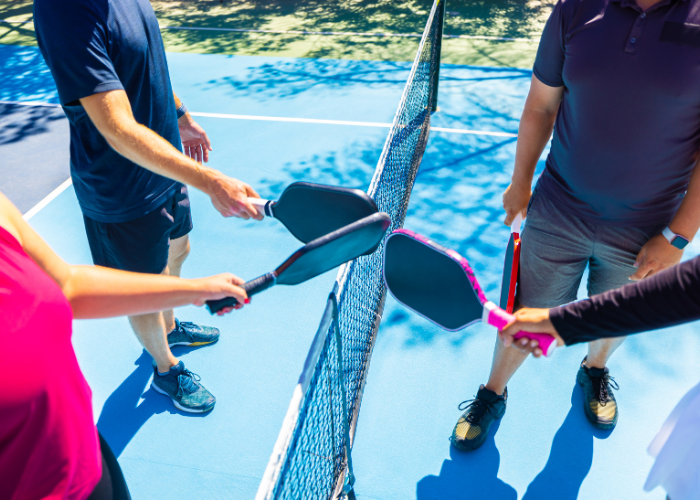
How to Serve the Ball
To serve in pickleball, players need to follow certain rules and a specific technique. After playing a few times, serving becomes easy.
The player serves from behind the baseline on one side of the court, using an underarm motion so the paddle hits the ball below waist height.
The serving arm moves up during the serve, and the paddle has to be lower than the wrist when striking the ball. The player's feet must not touch the court’s surface while serving.
The goal is to serve the ball diagonally across the court, aiming for it to land in the opposite diagonal service box.
If a serve fails, there’s no second chance; the server loses their turn.
|
Different from tennis, in pickleball, if the ball hits the net on the serve and lands in the right box, it's considered a fault, and the serving player loses their serve. |
Pickleball Serving Sequence
In pickleball, the serving sequence is critical to gameplay and follows a fixed order to ensure fairness and continuity.
The game begins with the player on the right-hand side of the court (when facing the net) serving the ball.
If the serving team wins the point, the server moves to the left-hand side and serves from there. This alternating pattern continues with each point won.
In doubles matches, both players on a team serve and switch sides until a fault is committed. The serve is then passed to the opposing team.
This sequence not only dictates who serves but also plays a strategic role in the positioning and movement of players throughout the match.
|
If the server's score is even, they'll serve from the right-hand side. If odd, from the left-hand side. This ensures a consistent and fair serving sequence throughout the match. |
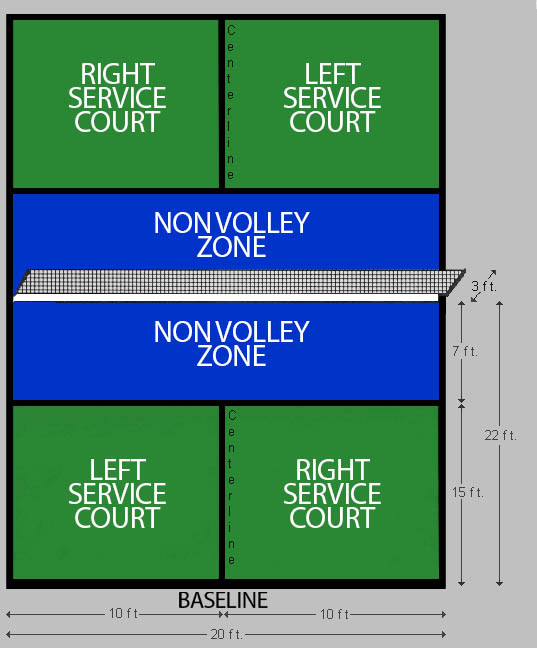
The Non-Volley Zone in Pickleball
The Non-Volley Zone in pickleball, also known as ‘the kitchen’ is a key part of the court that significantly affects the game's strategy and rules.
It's a 7-foot area on both sides of the pickleball net that acts as a buffer. In this zone, players can't hit the ball before it bounces, known as a volley.
The main reason for the Non-Volley Zone is to stop players from making smash hits right at the net, which could overpower the game and minimise the exciting rallies that make pickleball so entertaining.
The rule that players must let the ball bounce once before hitting it when they're in the kitchen encourages longer rallies and smart positioning.
If a player breaks this rule by volleying the ball from within the kitchen, it's considered a fault, and the serve goes to the other team.
The Double Bounce Rule
The Two-Bounce Rule (or Double Bounce Rules) is a key part of pickleball that makes the game more interesting, especially at the start of each point.
It says that after the serve, the ball must bounce once on the receiver's side and then once on the server's side before either team can start volleying.
After these two bounces, players can choose to volley or hit groundstrokes for the rest of the game. This rule helps make the volleys last longer and keeps the game fun for players at all levels.
It stops the serving team from getting an unfair advantage by rushing to the net to volley the return serve. Breaking this rule is considered a fault, and the player or team at fault loses the serve or point.

What Are the Different Faults in Pickleball?
Faults in pickleball represent actions or occurrences that violate the rules set by the International Pickleball Federation (FIP), leading to a halt in play and the loss of the serve or a point. They're essential to maintaining the game's flow and fairness.
Here are some common examples of faults:
|
Understanding and avoiding these faults is critical for players who wish to compete effectively and enjoy the game of pickleball.
What Are Pickleball Line Calls?
Line calls in pickleball play a crucial role in determining the outcome of points during a game. A line call decides whether a ball is in or out based on its landing position in relation to the court's boundary lines.
The basic principle is straightforward: if any part of the ball touches any part of the line that encloses the area of play, the ball is considered ‘in’.
Alternatively, if the ball lands outside those boundary lines, it is deemed ‘out’, affecting the score accordingly.
In official tournaments, line judges (like umpires in tennis) may assist in making these calls, but in casual play, it often falls to the players themselves to make honest and fair line calls.
Pickleball Courts 101: The Full Low Down

How Pickleball Scoring Works
Understanding the scoring system in pickleball is crucial to knowing who's won during casual matches. Here is an overview of how scoring works in this fast-paced racket sport.
Winning Points
In pickleball, only the team serving can score points, turning every serve into a chance to lead. A team scores a point when the other team makes a mistake like:
- Hitting the ball out of bounds
- Not getting the ball over the net
- Breaking the double bounce rule
- Making a service error
The serving player or team keeps serving until they make a mistake, which causes them to lose the serve.
Points to Win
The game goes until a team reaches a set score, like 11, 15, or 21, and they must be ahead by 2 points to win.
So, if it's a game to 11 and the score ties at 10-10, the play keeps going until one team leads by two, making it 12-10, for example.
Final Thoughts: Learning the Basics of Pickleball
Learning the basics of pickleball enhances your playing experience and introduces you to the game's strategic aspects. It's vital for both beginners wanting to start playing and experienced players aiming to improve their skills. Understanding the fundamental rules and techniques is key.
If you want to find out more about this rising star of racket sports, check out the rest of our pickleball blog posts over on our full blog!
FAQs
Can You Ever Step in the Kitchen in Pickleball?
Yes, in pickleball, players can enter the kitchen or Non-Volley Zone, but only if the ball has bounced first. Hitting the ball before it bounces while in this zone counts as a fault. This rule promotes strategic play and encourages volleying from behind the zone.
What is the Golden Rule in Pickleball?
Yes, planning permission is often required for constructing a padel tennis court, especially if it's intended for public use or represents a significant development.
It's essential to consult with your local council to understand specific requirements and ensure your project complies with local planning policies.
What is a Dink in Pickleball?
A dink in pickleball is a gentle, precise shot made close to the net. Its goal is to go over the net and drop into the opponent's non-volley zone. The idea is to prevent the opponent from hitting back hard, putting them at a disadvantage.
What are Illegal Serves in Pickleball?
Illegal serves in pickleball include:
- Serving before the opponent is ready
- Stepping on or over the baseline during the serve
- Not hitting the ball underarm
- Making contact above waist level
Any serve violating these conditions is faulted, resulting in a loss of serve.





